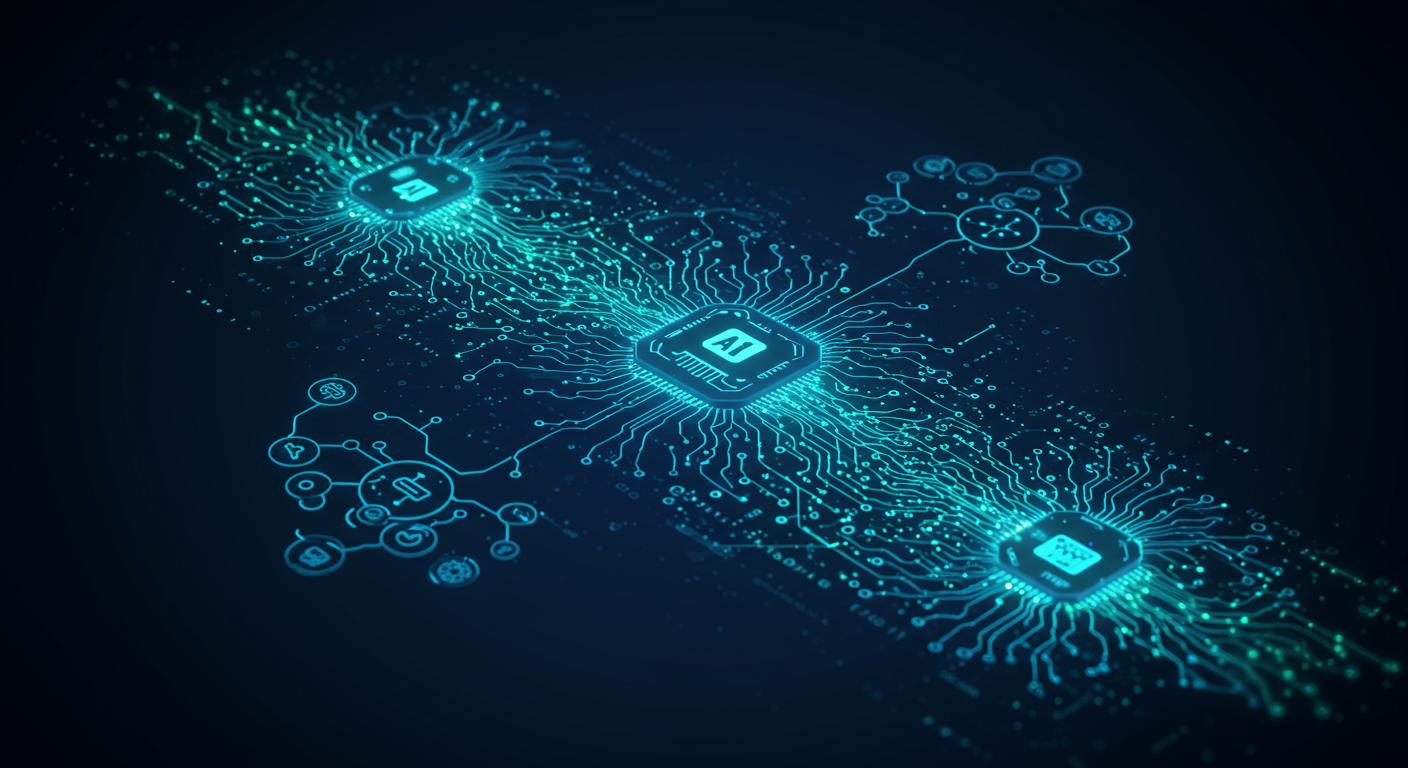The Convergence of AI and Network Automation

Artificial Intelligence (AI) and Machine Learning (ML) are no longer buzzwords but transformative technologies reshaping industries, and network automation is no exception. The integration of AI into network automation, often termed AIOps (AI for IT Operations) in a broader sense, promises to elevate network management from reactive troubleshooting to proactive and predictive operations.
By leveraging AI/ML algorithms, network automation systems can analyze vast amounts of network data (telemetry, logs, performance metrics) to identify patterns, predict failures, optimize performance, and automate complex decision-making processes far beyond the capabilities of traditional, rule-based automation.
Key Benefits of AI in Network Automation
- Predictive Maintenance: AI algorithms can predict potential network faults or performance degradation before they impact users, allowing for proactive intervention.
- Enhanced Anomaly Detection: ML models can identify unusual patterns or behaviors in network traffic that might indicate security threats or operational issues, which might be missed by human operators.
- Intelligent Resource Allocation: AI can dynamically allocate network resources (bandwidth, compute) based on real-time demand and predictive analytics, ensuring optimal performance and efficiency.
- Automated Root Cause Analysis: When issues occur, AI can sift through complex data to quickly pinpoint the root cause, significantly reducing mean time to resolution (MTTR).
- Self-Healing Networks: In advanced scenarios, AI-driven automation can enable networks to automatically detect, diagnose, and remediate issues without human intervention.
- Improved Security Posture: AI can enhance network security by identifying sophisticated attacks, automating threat responses, and adapting security policies in real-time. Learn more about general Network Automation benefits at Cisco.
Use Cases for AI-Powered Network Automation
The applications of AI in network automation are diverse and rapidly expanding:
- Intelligent Traffic Management: Optimizing data routing based on predictive models of traffic flow and network conditions.
- Proactive Capacity Planning: Using ML to forecast future capacity needs and recommend upgrades or reconfigurations.
- Automated Policy Enforcement and Compliance: AI systems can ensure network configurations adhere to security policies and regulatory requirements, automatically flagging or correcting deviations.
- Personalized Network Services: Tailoring network performance and services for individual users or applications based on their specific needs and historical behavior.
- Zero-Touch Provisioning with Intelligence: Enhancing zero-touch provisioning by enabling devices to not only self-configure but also to intelligently integrate into the optimal network segment based on AI-driven analysis. For broader context on AI in operations, explore IBM's AIOps solutions.
Tools and Technologies
Implementing AI in network automation involves a combination of tools and platforms:
- AIOps Platforms: Specialized platforms that provide the infrastructure for ingesting data, training ML models, and deploying AI-driven automation.
- Machine Learning Frameworks: Libraries like TensorFlow, PyTorch, and scikit-learn are used to develop custom ML models for specific network automation tasks.
- Data Analytics and Telemetry Tools: Systems for collecting, processing, and analyzing large volumes of network data (e.g., Prometheus, Grafana, ELK stack) are crucial for feeding AI models.
- Integration with Existing Automation Tools: AI capabilities are often integrated into or used alongside established network automation tools like Ansible, SaltStack, and orchestrators like Kubernetes (for network functions).
Challenges and Considerations
While the potential is immense, integrating AI into network automation also presents challenges:
- Data Quality and Quantity: AI models require large volumes of high-quality, labeled data for effective training.
- Complexity of Model Development: Building, training, and maintaining effective ML models requires specialized skills.
- Interpretability and Trust: Understanding why an AI model makes a particular decision (explainability) is crucial, especially in critical network operations.
- Integration with Legacy Systems: Incorporating AI into existing, often complex, network infrastructures can be challenging.
- Skill Gap: A shortage of professionals with expertise in both networking and AI/ML.
Expert Tip: Start with well-defined use cases where AI can provide clear value. Focus on collecting clean, relevant data and begin with simpler models, iterating as you gain experience and demonstrate ROI.
The Future is Autonomous
The journey towards fully autonomous networks, capable of self-configuration, self-healing, self-optimization, and self-protection, is heavily reliant on advancements in AI and network automation. As AI technologies mature and become more accessible, their role in managing complex, dynamic network environments will only grow, leading to more resilient, efficient, and intelligent networking. Keeping up with general AI advancements is also key, for instance, understanding progress in fields like OpenAI's research can provide insights into future capabilities.